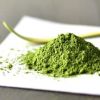-
Fast ShippingFree shipping for orders above $40
to most countries. -
Secure PaymentPay with Paypal, Credit Card …
-
Carefully SelectedFrequently Visit Tea Gardens.
Taste Repetitiously -
15 Days RefundNo Questions Asked
Refund Policy
Menghai Palace Ripened Pu-erh Cake Tea 2009
"Sticky Rice" aroma, cost-effective
"Sticky Rice" aroma, cost-effective
| Origin: |
Bulang Mountain, Menghai County, Xishuangbanna, Yunnan Province, China |
|---|---|
|
Harvest Date: |
April, 2009 |
|
Production Date: |
January 28, 2010 |
| Weight: |
357g |
| Dry Leaf: |
Round cake shape, but slightly loose on the edge, many golden tea buds on the surface. |
| Aroma: |
Strong glutinous rice aroma |
| Liquor: |
Clear, bright deep red color |
| Taste: |
Soft, smooth and Strong glutinous rice taste with good aftertaste |
| Tea Bush: |
Menghai large-leaf tea bush species |
| Tea Garden: |
Man Xin Long Tea Garden |
| Fermentation: |
Post-fermented |
| Caffeine: |
Low caffeine (less than 10% of a cup of coffee) |
| Storage: |
Store in cool, dry place away from sunlight; keep ventilated |
| Shelf Life: |
The aged the better |
Angel's Comment:
The glutinous rice aroma of Menghai Palace Ripened Pu-erh Cake Tea is very outstanding, which is suitable for the new tea friends who want to try ripened Pu-erh tea.
The leaves used to make pu-erh tea can be divided into eleven grades, the most delicate of which is palace-grade with many buds and a fine, smooth taste.
The leaves for this Palace Ripened pu-erh cake come from Menghai County of Yunnan, harvested in 2009 and pressed into cakes in 2010. Following many years of dry-storage aging conditions, the ‘pile’ flavor has disappeared, and in its place has developed a full, aged fragrance. When brewed a strong, sweet rice aroma emanates from the tea; this aroma is persistent and rich, and dominates the flavor of the tea. If you enjoy high-aroma pu-erh tea, this cake will be a good daily drinker.
 |
Cup Method |
 |
Chinese Gongfu Method |
 |
Teacup: 12oz / 355ml |  |
Gaiwan: 3.8oz / 110ml |
 |
212℉ / 100℃ |  |
212℉ / 100℃ |
 |
5g Tea |  |
8g Tea |
 |
Brewing time: 5 - 8 mins |  |
10 steeps: rinse, 10s, 10s, 15s, 15s, 60s, 160s, 180s, 260s |
| Rinse time is 5 seconds |
Man Xin Long stockaded village is located in Bulang Shan at an elevation of 1800 meters, surrounded all around by thick forests. The Bulang nationality here migrated to the area over two hundred years ago; the tea trees within the nearby 150mu were planted during that time.
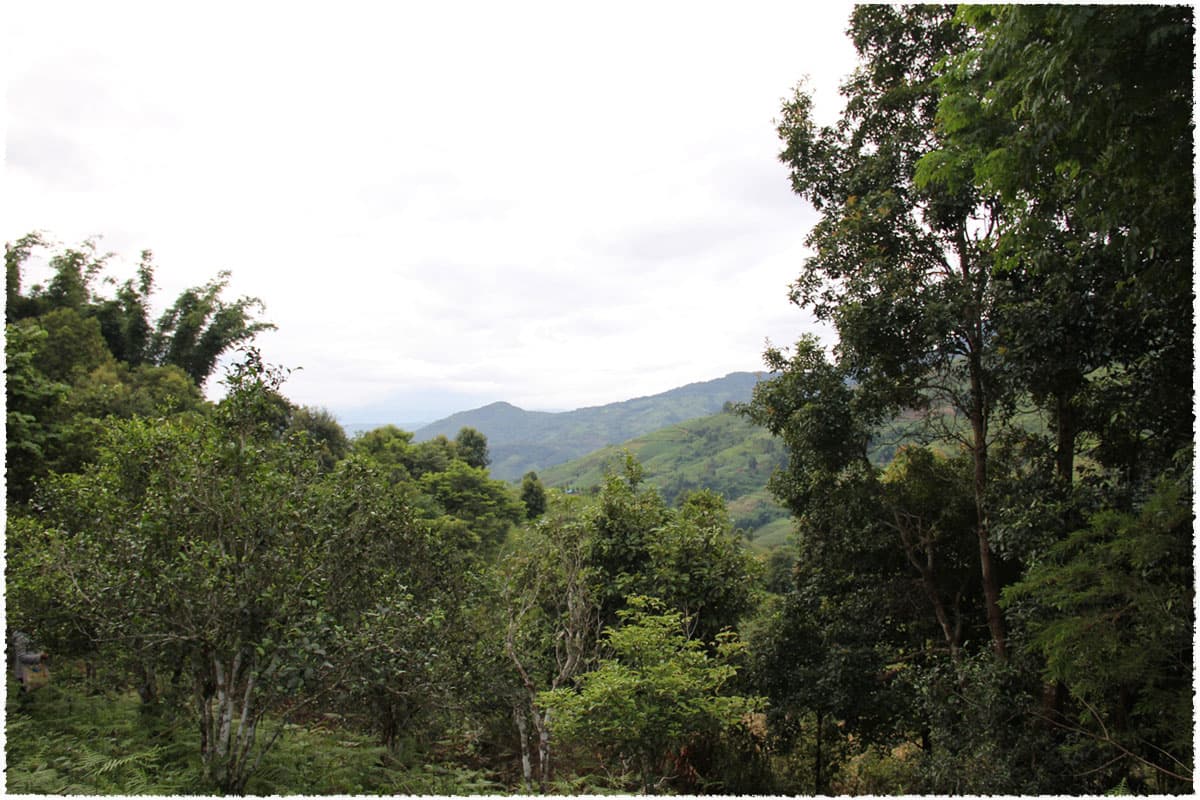
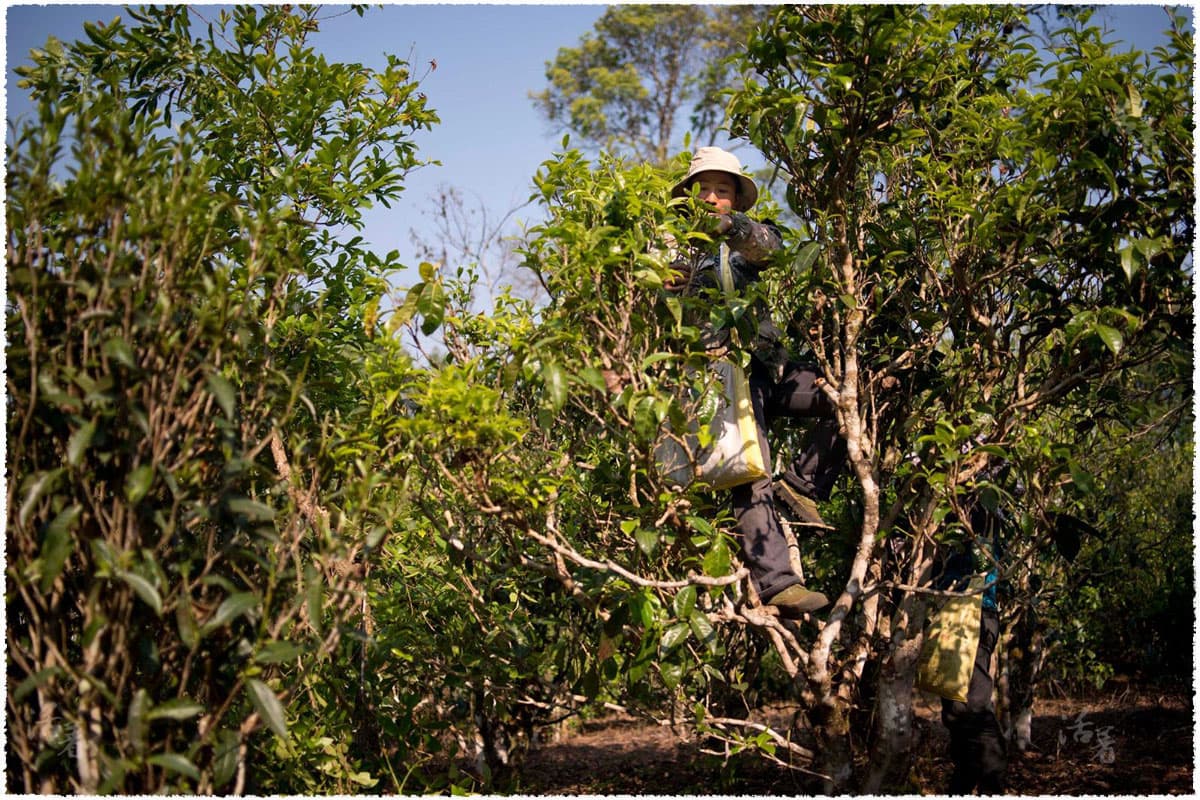
In the tea grove, tea farmers are picking tea leaves on the high tea tree.
Bulang Mountain in Menghai County of Xishuangbanna, Yunnan, is a famous pu-erh production area with the highest abundance of ancient tea trees within 100,000 hectares. The mountain rolls and stretches throughout Menghai, with deep valleys cutting through hills. The average elevation here reaches over 1200 meters, while the tall Sanduo Peak stretches up to around 2100 meters; standing there will give you a clear view of the entire mountain.
The surrounding area experiences good sunlight and abundant rainfall, being of the subtropical monsoon climate, and a remarkably short frost season. During the spring and winter, a thick, heavy fog lies around the area, while summer and autumn are most often overcast and rainy.
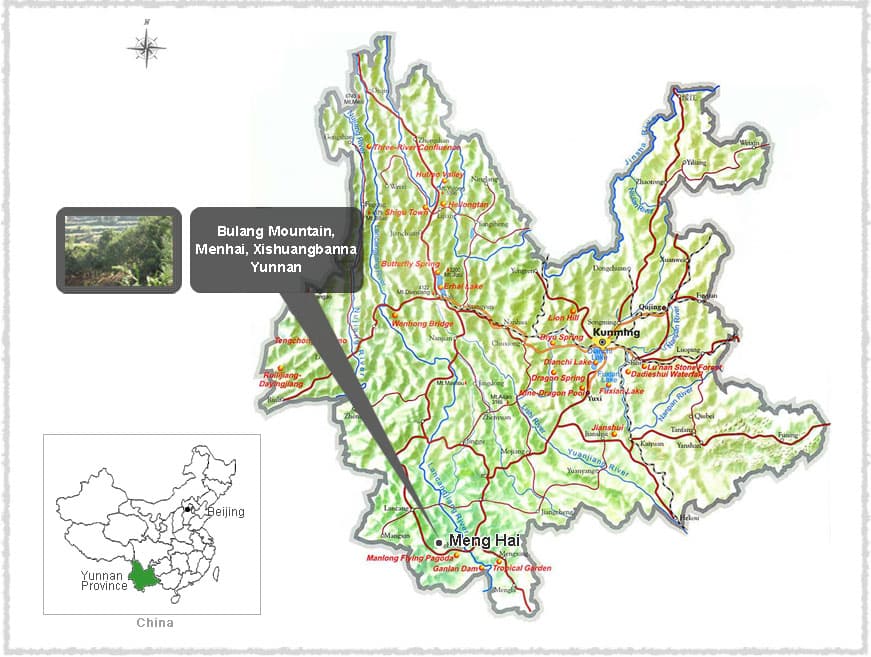
Native to Menghai County, Xishuangbanna, the Menghai large-leaf tea tree spaces was rated as the most improved national tea variety in 1984. It has the ability to grow up to 7m tall in the wild, with bold green leaves that are much larger than more common varieties. The buds of this species are most often yellow-green, and coated in fine fuzz. The leaves of this tree are high in phytochemicals: one tea bud with two leaves contains 2.3% amino acids, 32.8% polyphenolic compounds, 4.1% caffeine, and 18.2% catechinic acid. As a result, pu-erh tea made from the Menghai species is high quality and rich in flavor, with a soft taste and full-bodied essence.
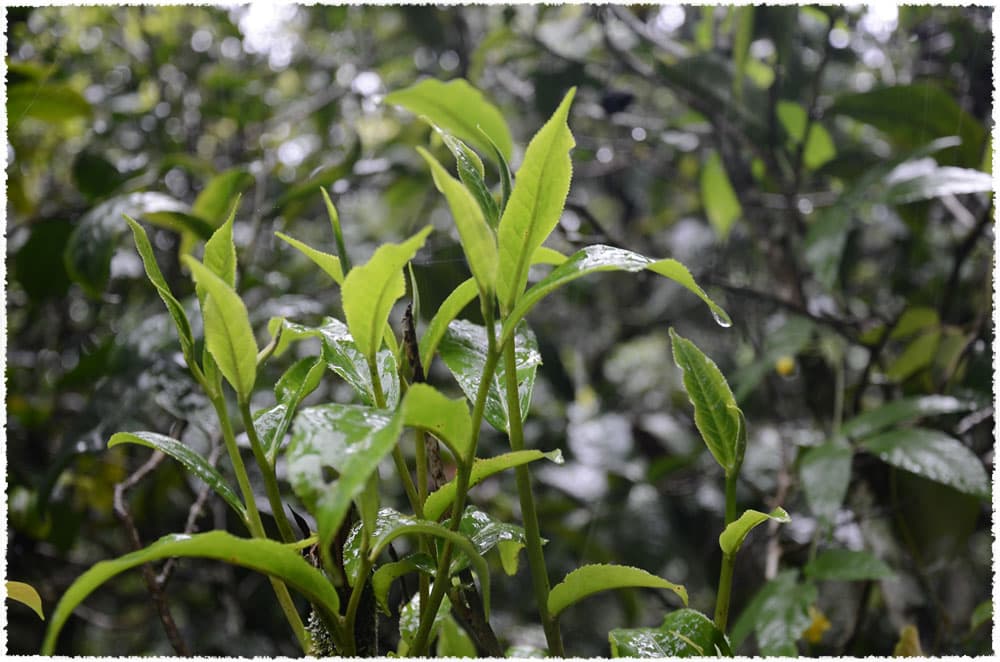
Pu-erh tea is one of the oldest types of Chinese tea, with a history stretching back over 1,700 years to the Eastern Han Dynasty, when the tea was called Jing Cha. It is named after the town of Pu’er in Yunnan province, which was the earliest trading center for this tea. In its early history pu-erh was used as a bartering currency throughout southwest China, and there the famed Cha Ma Gu Dao - or Tea Horse Road - was built especially to transport this tea through the Himalayas to other countries and areas in Tibet.
-
5 stars8
-
4 stars6
-
3 stars2
-
2 stars1
-
1 star0




